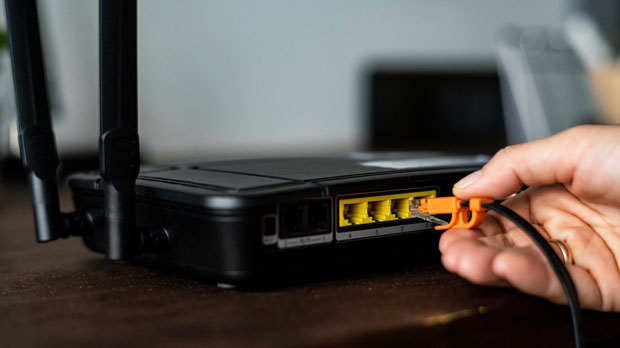When it comes to using proxies for browsing or scraping, users often face a decision between free and paid residential proxies. Both options have their advantages and limitations, making it important to understand how each performs in real-world scenarios. Free residential proxies might seem appealing due to their cost-effective nature, but they often come with limitations in terms of speed, reliability, and security. On the other hand, paid residential proxies offer a more robust, faster, and more secure solution, often with better customer support. This article explores the key performance differences between free and paid residential proxies, providing insights for users who are looking to make an informed choice based on their specific needs. What Are Residential Proxies?Residential proxies are IP addresses provided by real residential devices like routers, phones, or computers, making them appear as if they are legitimate, residential users. Unlike datacenter proxies, which are generated by large-scale data centers, residential proxies are harder for websites to detect and block. This makes them a popular choice for web scraping, accessing geo-restricted content, and maintaining privacy while browsing the web.Free Residential Proxies: Advantages and LimitationsAdvantages of Free Residential Proxies1. Cost-Free: The most obvious benefit of free residential proxies is that they come at no cost. Users can access these proxies without any financial investment, which is particularly useful for individuals or small businesses operating on tight budgets.2. Anonymity and Privacy: Free residential proxies can still provide a reasonable level of anonymity by masking the user's IP address with that of a real residential location. This can help protect privacy during online activities like browsing or accessing content.3. Access to Geo-Restricted Content: Free residential proxies may offer access to content that is restricted to certain geographic locations. By using an IP address from a residential area in the target location, users can bypass geo-blocks.Limitations of Free Residential Proxies1. Limited Speed: Free residential proxies typically offer slower speeds due to their overuse and limited resources. Many users share these proxies, leading to network congestion and reduced performance.2. Instability and Reliability Issues: Because free residential proxies are often shared by a large number of users, they can become unreliable. Frequent downtime, slow response times, and occasional failures are common issues that can disrupt tasks like web scraping or accessing content.3. Security Concerns: Free proxies may lack encryption and security protocols, making them vulnerable to cyberattacks and data breaches. This is especially problematic for users handling sensitive information, as free proxies might expose them to potential risks.4. Limited Support and Features: Free proxies usually come with minimal or no customer support. If any issues arise, users may have to troubleshoot on their own, which can be frustrating and time-consuming.Paid Residential Proxies: Advantages and LimitationsAdvantages of Paid Residential Proxies1. Superior Speed and Performance: Paid residential proxies generally offer much faster speeds compared to free options. These proxies are less likely to experience congestion, resulting in a smoother experience when browsing or scraping.2. Enhanced Reliability: Paid proxies are more stable and reliable. These proxies are typically allocated to a specific number of users, meaning they are not subject to the same level of overcrowding that free proxies face. This reduces downtime and ensures more consistent service.3. Better Security and Privacy: Paid residential proxies often come with advanced security features like encryption, which protects users’ data from being intercepted or compromised. This makes them a safer choice for sensitive activities such as accessing private accounts or conducting business transactions.4. Access to Premium Features: Paid services often offer premium features like rotating IPs, larger pools of IP addresses, and customizable configurations. These features allow users to adapt the proxies to their specific needs, whether they are conducting large-scale scraping projects or accessing geo-restricted content from different regions.5. Customer Support: One of the biggest advantages of paid residential proxies is access to professional customer support. Users can get help with troubleshooting, technical issues, and optimizing proxy usage, ensuring that they can continue their activities without interruption.Limitations of Paid Residential Proxies1. Cost: The primary drawback of paid residential proxies is the cost. While they offer enhanced performance, security, and support, they can be expensive. For individuals or small businesses with limited budgets, this might be a significant barrier.2. Setup Complexity: Some paid proxy services may require more technical knowledge to set up and configure, especially if they offer advanced features like rotating IPs or load balancing. This can be a hurdle for beginners who lack technical expertise.Comparing Performance: Free vs. Paid Residential ProxiesSpeed and LatencyOne of the most significant performance differences between free and paid residential proxies is speed. Free proxies often suffer from slow speeds due to heavy traffic from many users. As more people use a single proxy, the bandwidth gets divided, leading to slower response times and increased latency. Paid residential proxies, on the other hand, offer much faster speeds because they are less congested and more optimized for high-performance tasks.Reliability and UptimeReliability is another area where paid residential proxies outperform free ones. Free proxies are often unstable due to overuse, leading to frequent disconnections and downtime. Paid proxies, being more dedicated and well-maintained, offer greater reliability, ensuring that users can complete their tasks without interruptions.Security and PrivacyWhen it comes to security, paid residential proxies provide much stronger protections than free ones. Free proxies may expose users to potential risks such as IP and data leaks, while paid proxies typically offer encryption and more robust security measures, safeguarding users' online activities.Scalability and CustomizationFor large-scale projects, paid residential proxies are the better choice due to their scalability. Paid services often allow users to access larger pools of IP addresses and offer customizable configurations to meet specific requirements. Free proxies, with their limited pool and fewer features, may not be suitable for users who need to scale their activities.Conclusion: Which One to Choose?The decision between free and paid residential proxies ultimately depends on your specific needs and budget. Free residential proxies may suffice for low-volume tasks where speed and reliability are not critical, but for larger, more complex projects that require speed, security, and customer support, paid proxies are the better option. While the upfront cost may seem high, the long-term benefits of improved performance and reduced risk make paid proxies a more valuable choice for serious users. By understanding the key differences in performance, you can make an informed decision that best suits your needs.
Aug 19, 2025


























































